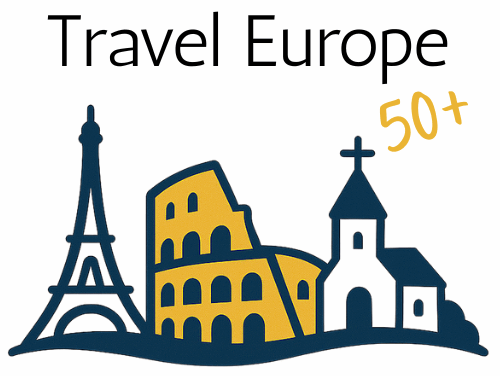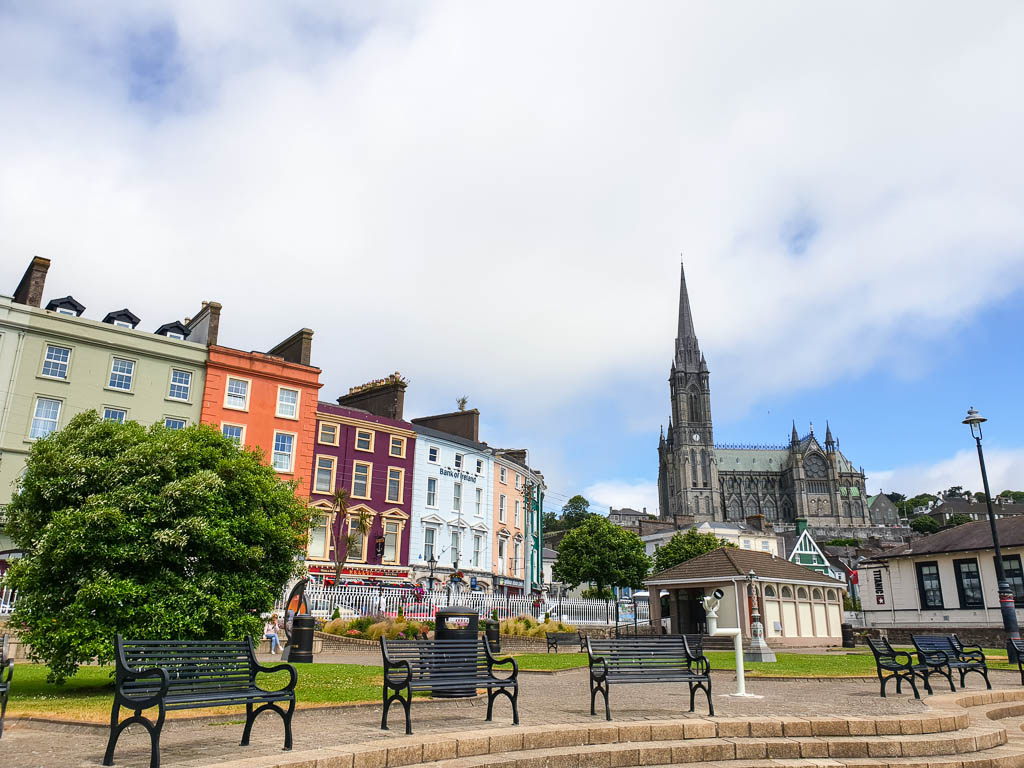If you’re over 50 and dreaming of exploring the rolling green hills, dramatic coastlines, and lively pubs of Ireland — we can tell you: there’s never been a better time to go. We first visited Ireland in 1999, and after dozens of trips and even a few years living in Limerick, we’ve discovered how to travel Ireland comfortably, meaningfully, and without the rush.
Ireland is a fantastic destination for mature travelers — friendly locals, manageable distances, deep cultural roots, and no language barrier (unless you’re in the Gaeltacht!). But to make the most of your trip, especially over 50, you’ll want to plan with comfort, convenience, and a slower pace in mind.
Here are our top tips to help you travel Ireland comfortably after 50.
Insider Tips for Stress-Free, Slow-Paced Travel from Two Long-Time Visitors
🌤️ 1. Pick the Right Time of Year
The best times to visit Ireland are May through mid-June and September through early October. You’ll get:
- Milder, drier weather
- Fewer crowds at major attractions
- Lower hotel and flight prices compared to peak summer
- Easier access to accommodations in smaller towns
Avoid July and August if you prefer quiet walks and quick restaurant reservations — that’s peak tourism season, especially with American and European families traveling.
🍁 We love visiting in late September — the countryside is still lush, but there’s a calm in the air.
🧳 2. Pack Smart (and for All Seasons)
Ireland’s weather is famously unpredictable. In one afternoon, you might feel sunshine, wind, and misty rain — which is all part of the charm!
Pack:
- Layers (think: t-shirts, long sleeves, fleece or sweater, waterproof jacket)
- Comfortable, waterproof shoes — for cobblestones and countryside walks
- A compact umbrella or packable poncho
- A crossbody bag or daypack
- Adapters for charging devices (Ireland uses UK plugs)
💡 Even in summer, bring a light scarf and warm layer — Irish evenings are often cool.
🚗 3. Consider How You’ll Get Around
Renting a car is the best way to explore Ireland’s smaller towns and scenic routes — but it’s not for everyone. Roads are narrow, signage can be confusing, and driving on the left takes adjustment.
Tips for car travel:
- Opt for automatic transmission (many Irish cars are manual)
- Get super CDW insurance for peace of mind
- Choose a compact car — easier for tight rural roads
- Avoid driving in Dublin or central Galway — park outside the core and walk in
🚆 Not driving? No problem. Ireland has good public transport between major cities:
- Irish Rail connects Dublin, Cork, Limerick, Galway, and Belfast
- Bus Éireann and private bus lines serve smaller towns
- Consider small-group tours for the Wild Atlantic Way, Ring of Kerry, or Northern Ireland
🛣️ We’ve done both — renting a car for a countryside loop, and using trains/buses for city-hopping. Both work well if you plan accordingly.
🛏️ 4. Choose Accommodations That Fit Your Pace
Ireland offers a range of accommodations ideal for mature travelers:
- B&Bs for friendly service and home-cooked Irish breakfasts
- Boutique hotels in historic buildings
- Country manor houses for luxury and tranquility
- Self-catering cottages or apartments if you want to cook and relax
Where to stay:
- In cities like Dublin or Galway, look for quiet neighborhoods just outside the center
- In villages, try family-run inns or farm stays for local flavor and calm evenings
🛏️ In Limerick, we loved staying near the River Shannon — peaceful, walkable, and with easy access to pubs and markets.
🐑 5. Embrace Slow Travel — Not Bucket List Burnout
Ireland isn’t meant to be rushed. Some of the best moments come from lingering:
- Watching the mist rise over Connemara
- Sharing stories with a local over a pint
- Wandering through a stone ruin in silence
- Listening to trad music in a quiet corner of a pub
Our advice:
- Stay 2–4 nights in each location instead of hopping every day
- Don’t feel pressure to “do it all” — enjoy deep, not fast travel
- Build in rest days or slow mornings with no big plans
🌿 One of our favorite days in Ireland was simply walking along the River Corrib in Galway and browsing the weekend market — no agenda, just joy.
🍽️ 6. Eat Well (And Comfortably)
Irish cuisine has come a long way — and today, you’ll find everything from modern farm-to-table restaurants to cozy cafés and classic pub fare.
Food tips for travelers over 50:
- Pub lunches are often more relaxed than evening meals
- Try seafood in the west, lamb in the hills, and brown bread everywhere
- Don’t miss the early bird specials at upscale restaurants (usually served 5–7 p.m.)
- Avoid the loudest bars — seek out music pubs with traditional sessions instead of rowdy crowds
🥣 We still crave the seafood chowder from a tiny pub in Dingle — served with a hunk of soda bread and a view of the bay.
📱 7. Use Technology for Ease
Some tech tools that helped us travel smarter in Ireland:
- Google Maps for driving and walking directions
- Rome2Rio and Irish Rail apps for planning transport
- TheFork.ie or OpenTable for restaurant reservations
- XE Currency or Revolut for managing euros and GBP (for Northern Ireland)
- WhatsApp to stay in touch with Irish B&B hosts or tour guides
📶 Wi-Fi is widely available, but we recommend getting a local SIM card or using an eSIM for consistent coverage.
Final Thoughts: Ireland Was Made for Mature Travel
From our first trip in 1999 to the years we spent living in Limerick, we’ve always felt that Ireland offers something special for travelers over 50 — space to breathe, time to connect, and moments of beauty that sneak up on you.
Whether you’re driving coastal roads, chatting with locals at the pub, or exploring castle ruins at your own pace, Ireland invites you to slow down and stay curious. With the right mindset (and a waterproof jacket), your trip will be just as rich and memorable — without ever feeling rushed.
🧳 Coming Up: Discover our list of the Best Small Towns in Ireland for 50+ Travelers or read about Driving in Ireland After 50: What to Know Before You Go — both based on decades of experience on Irish roads and back lanes.

